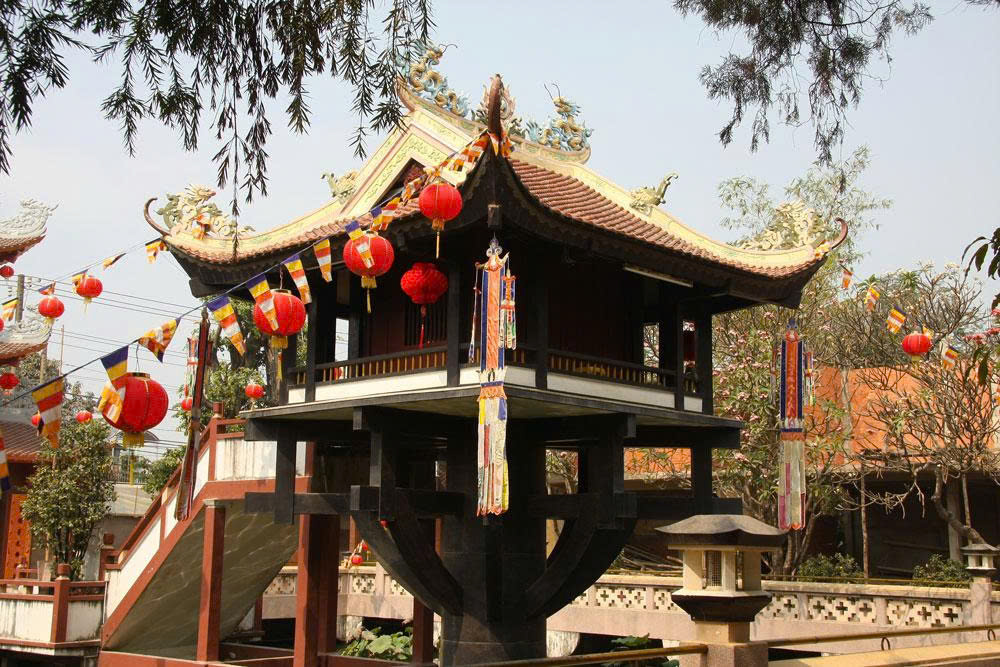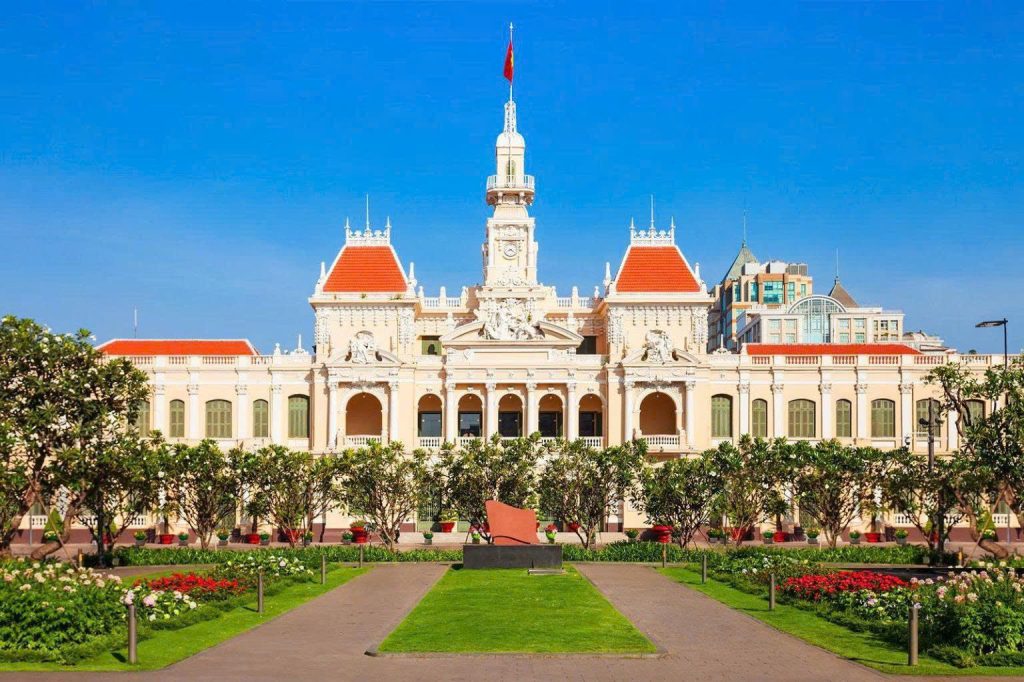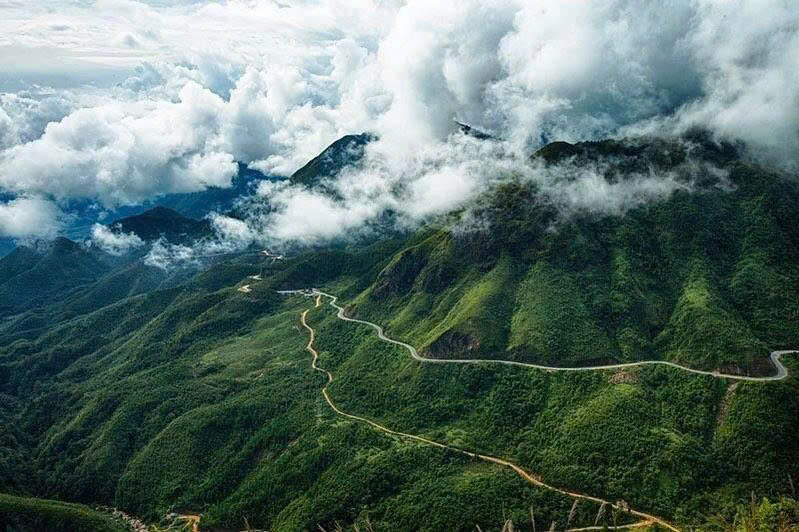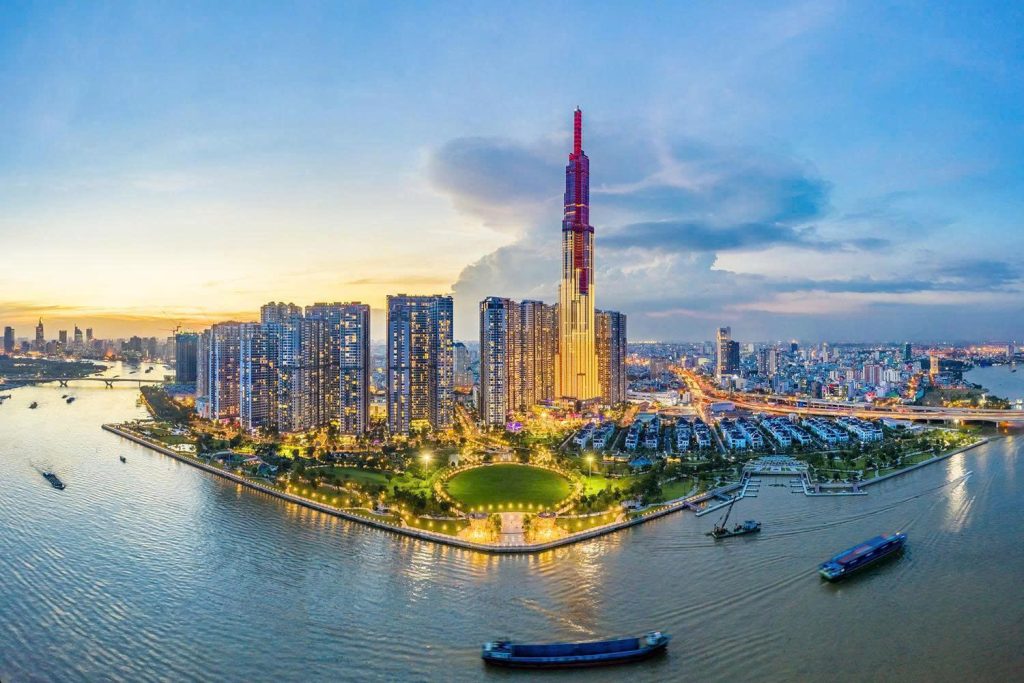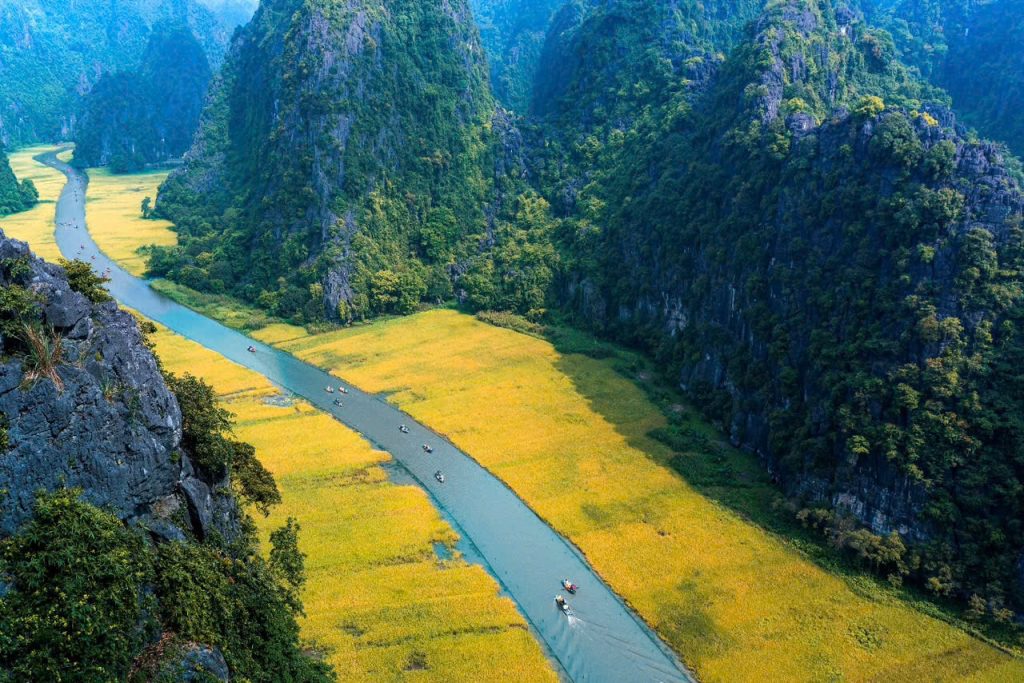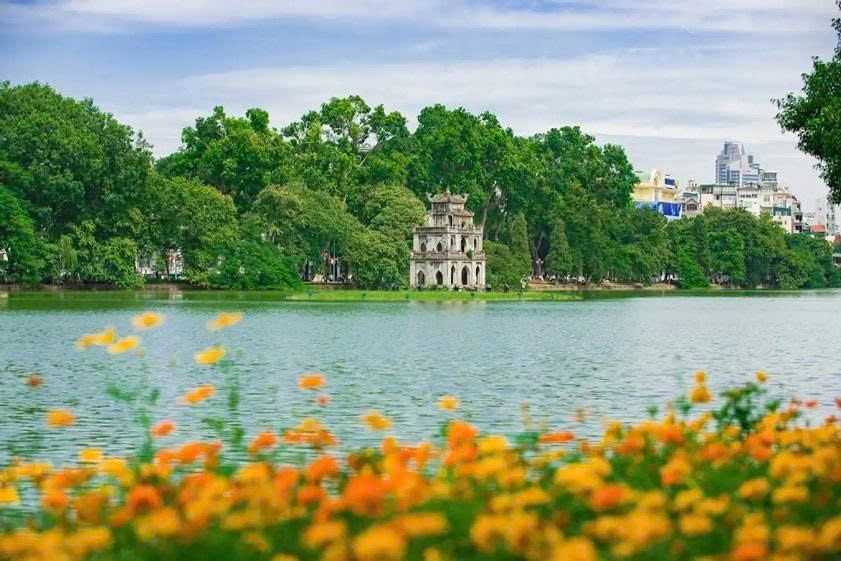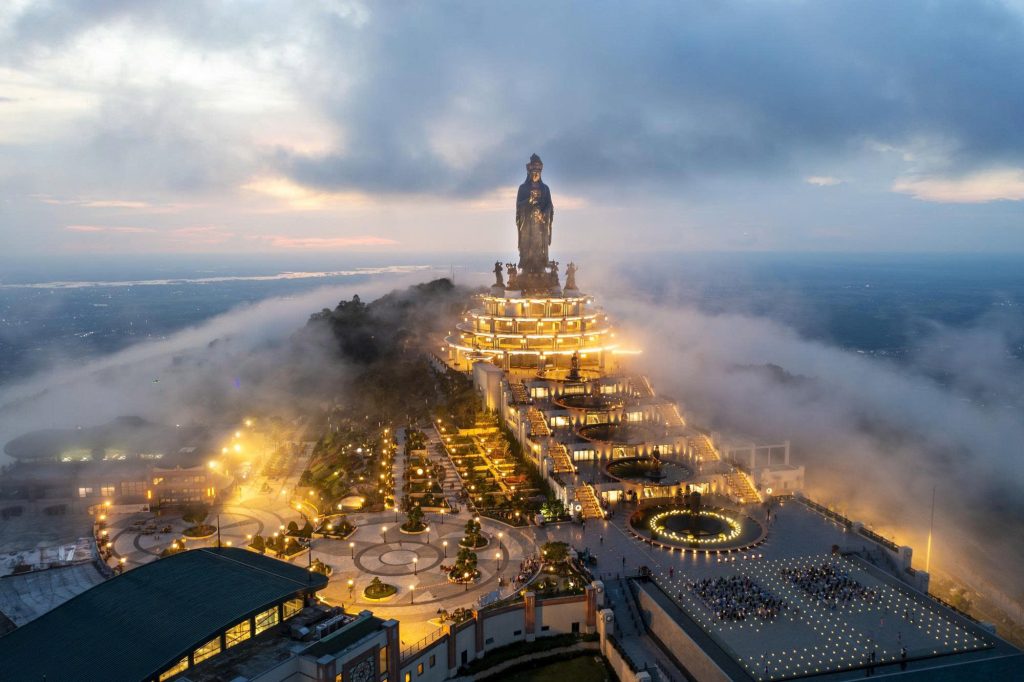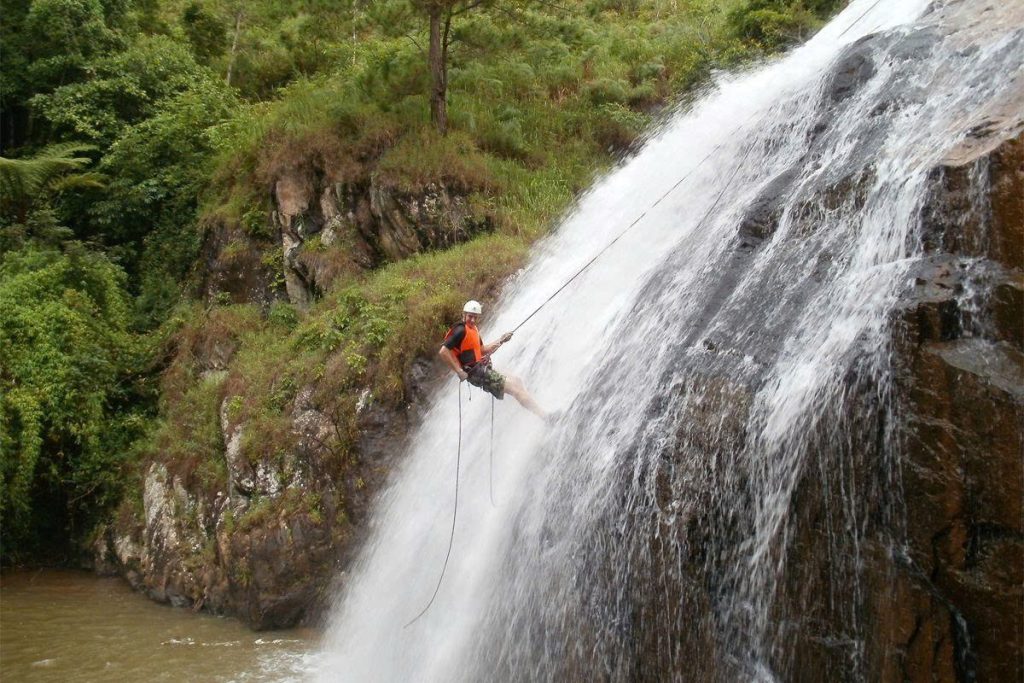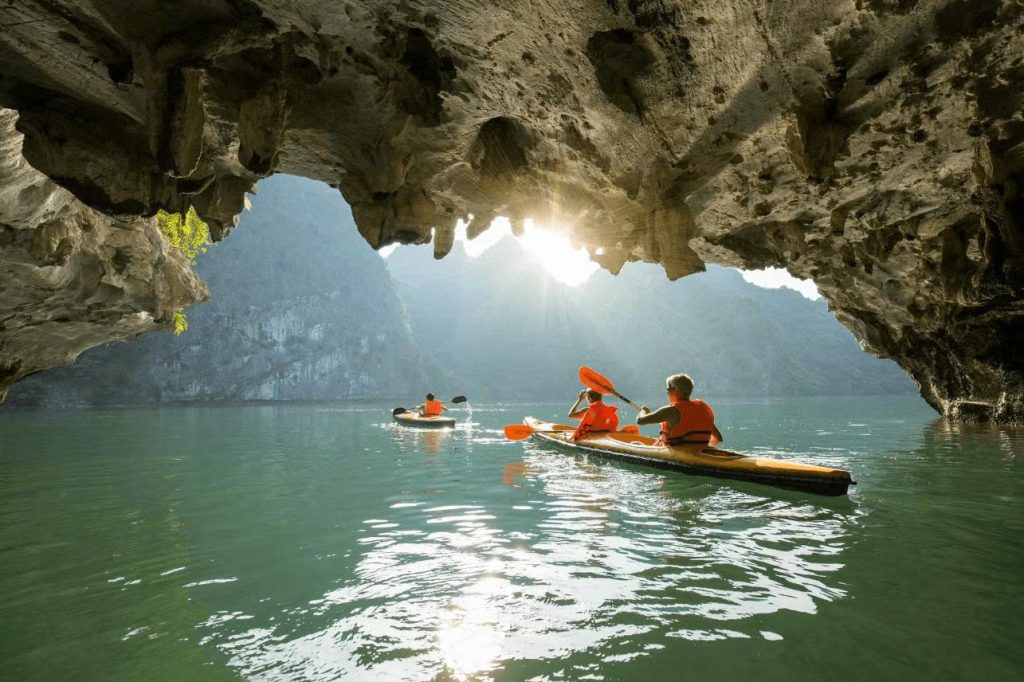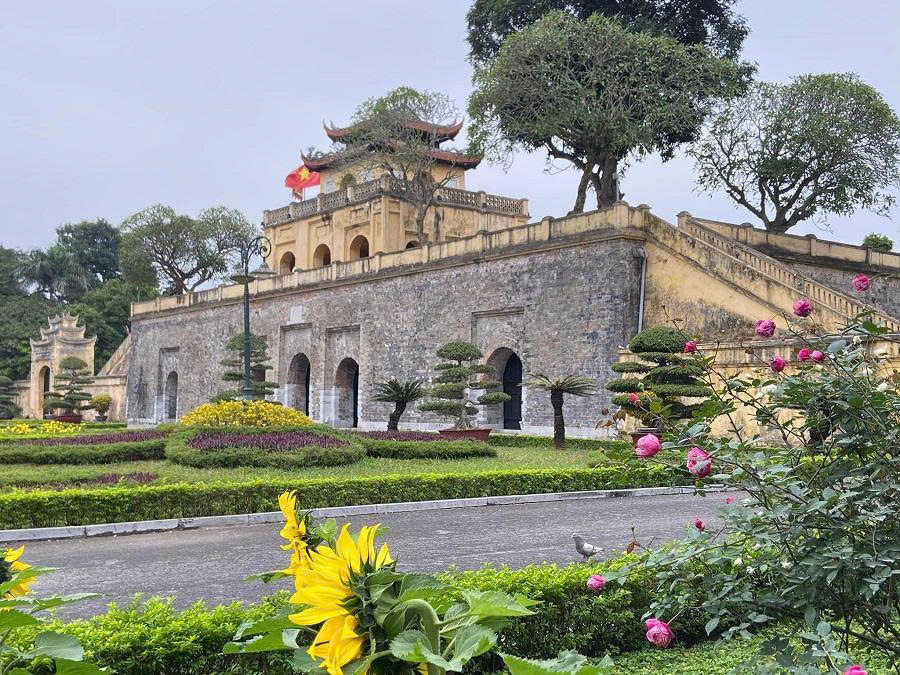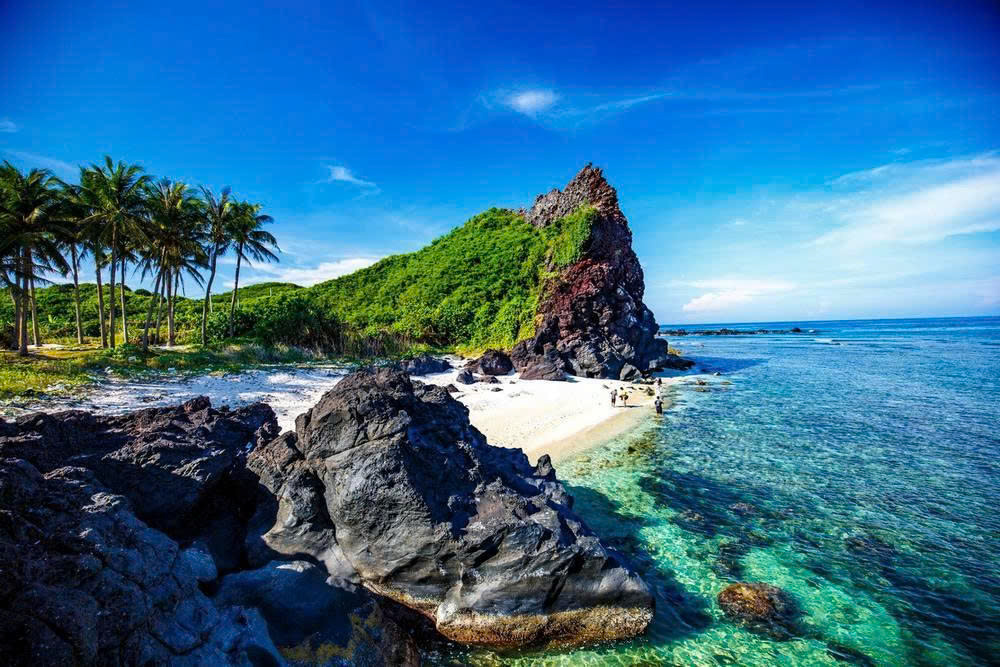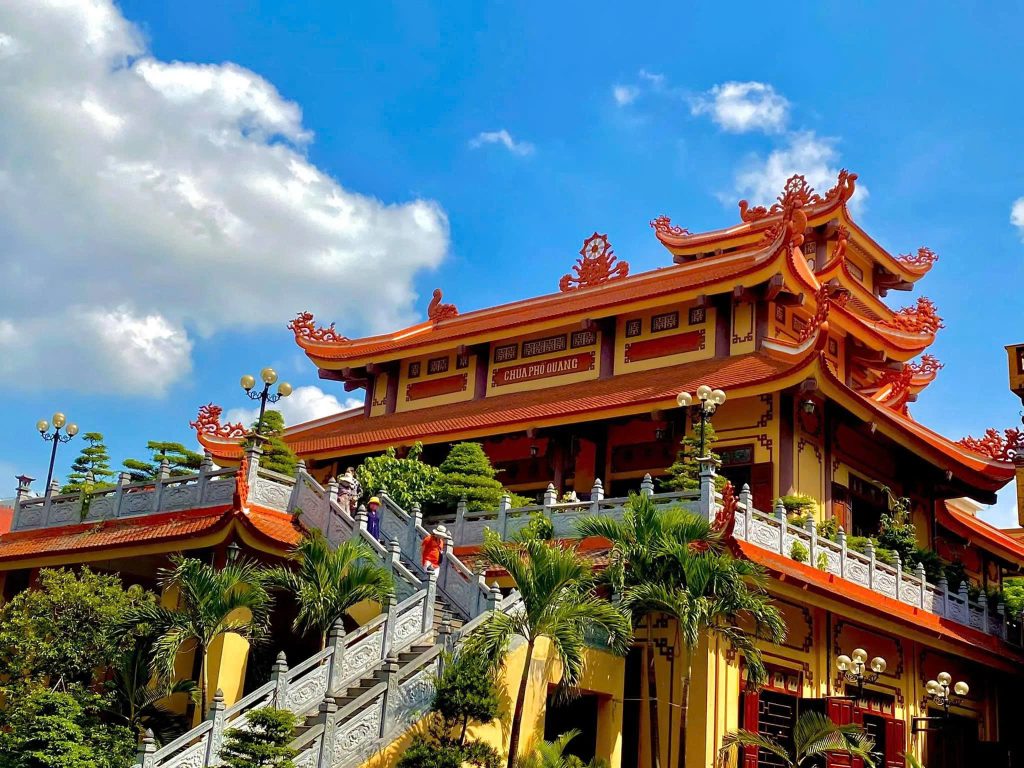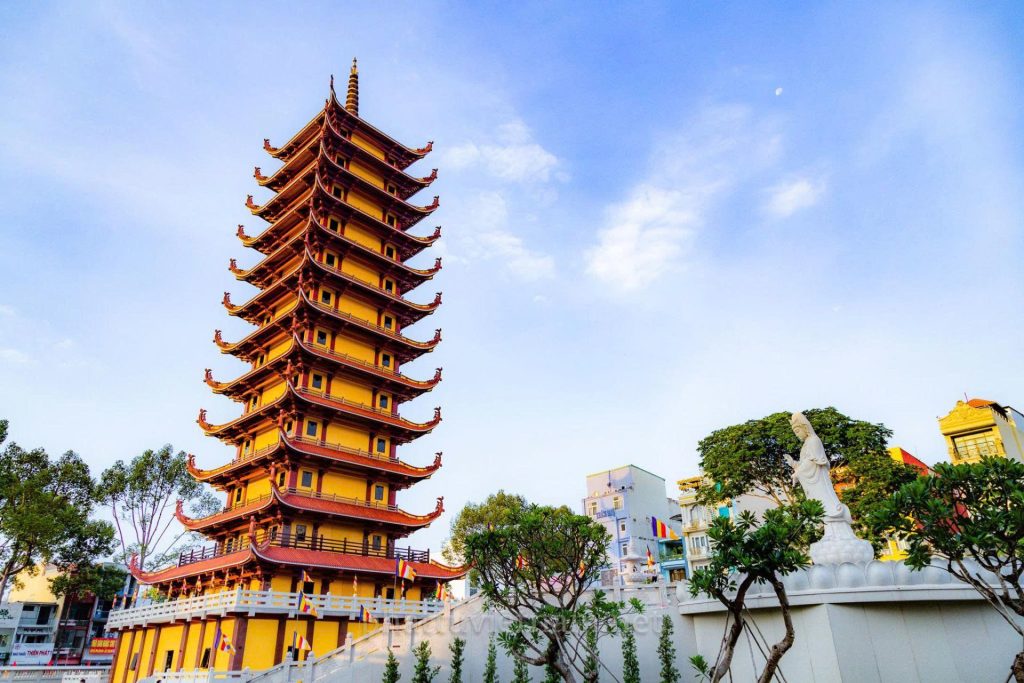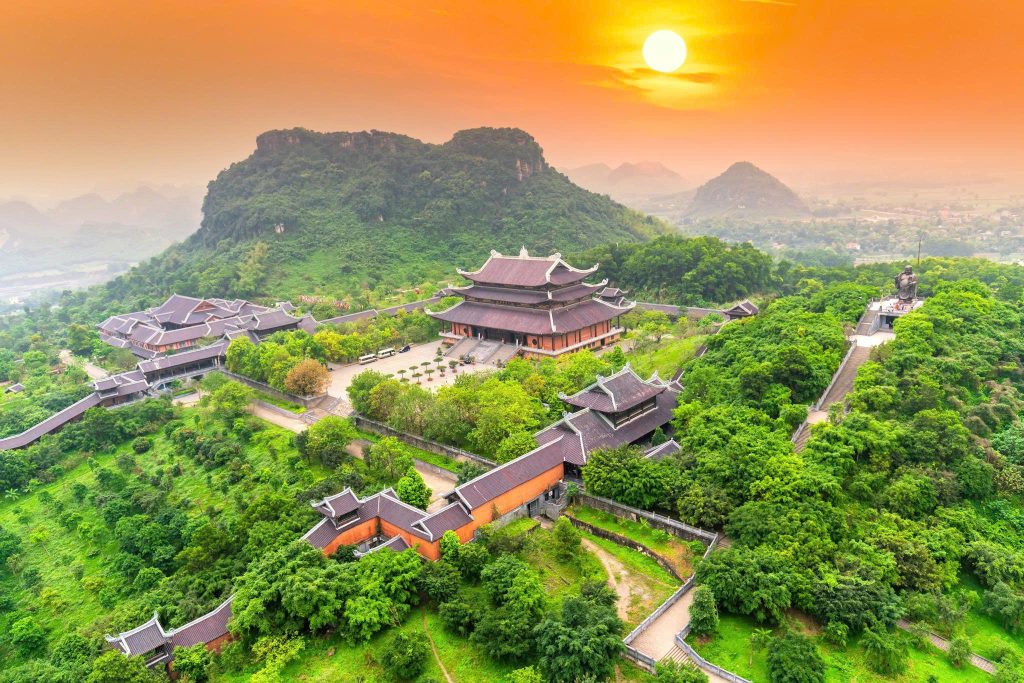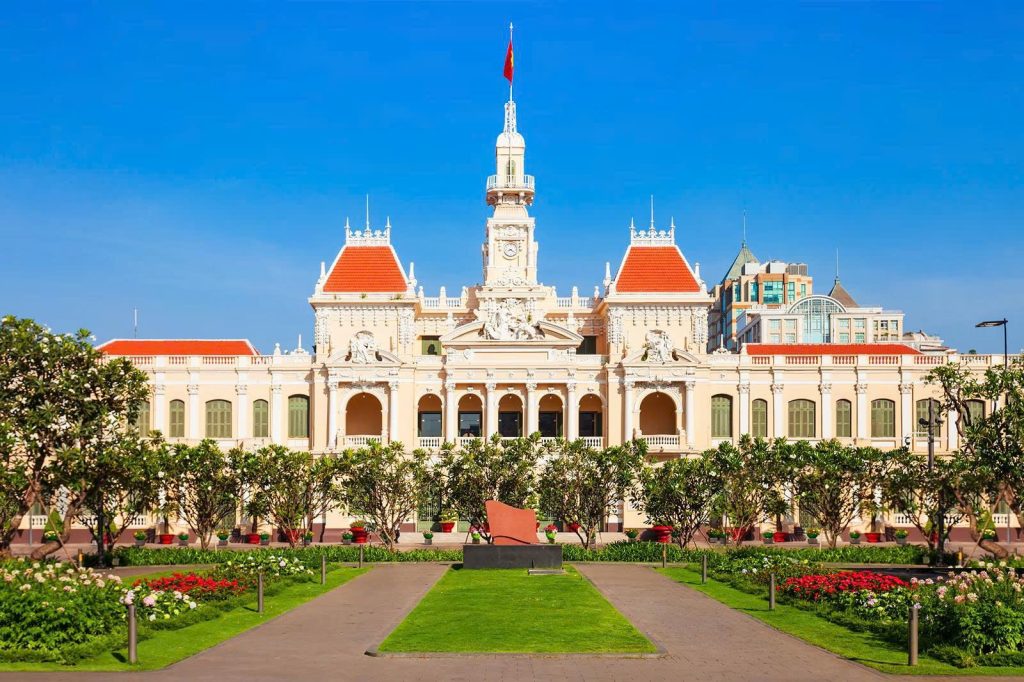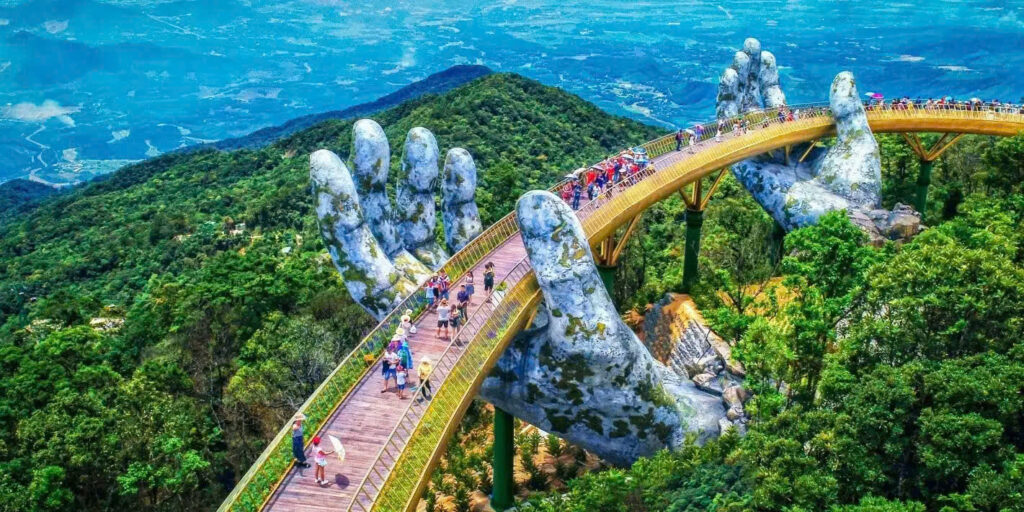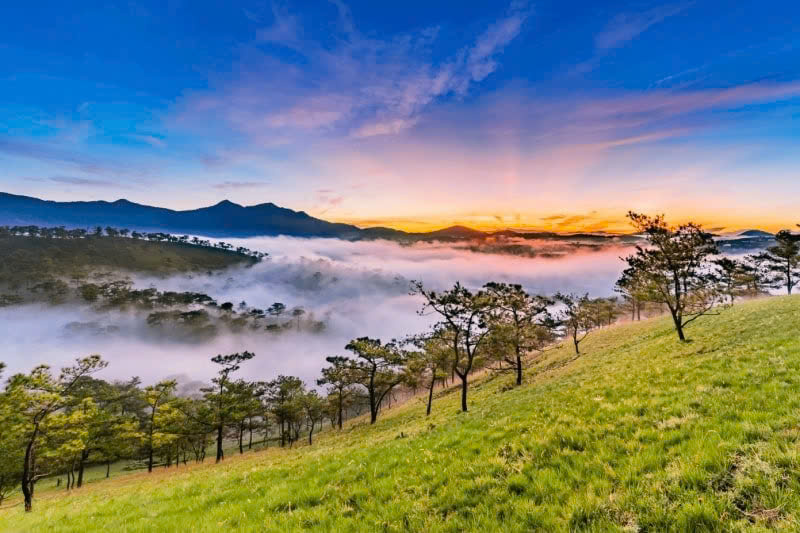Vietnam, a country known for its breathtaking landscapes and vibrant culture, also holds a deep spiritual heart. For travelers seeking a peaceful retreat and a deeper understanding of the local culture, a journey through Vietnam’s sacred sites is an essential experience. This guide will take you through some of the most profound spiritual destinations, offering a glimpse into the country’s rich history and religious traditions.
Northern Vietnam: The Cradle of Zen Buddhism
Northern Vietnam is home to many of the country’s most significant Buddhist and historical sites, reflecting centuries of spiritual devotion.
1. One Pillar Pagoda (Chua Mot Cot): An Iconic Lotus
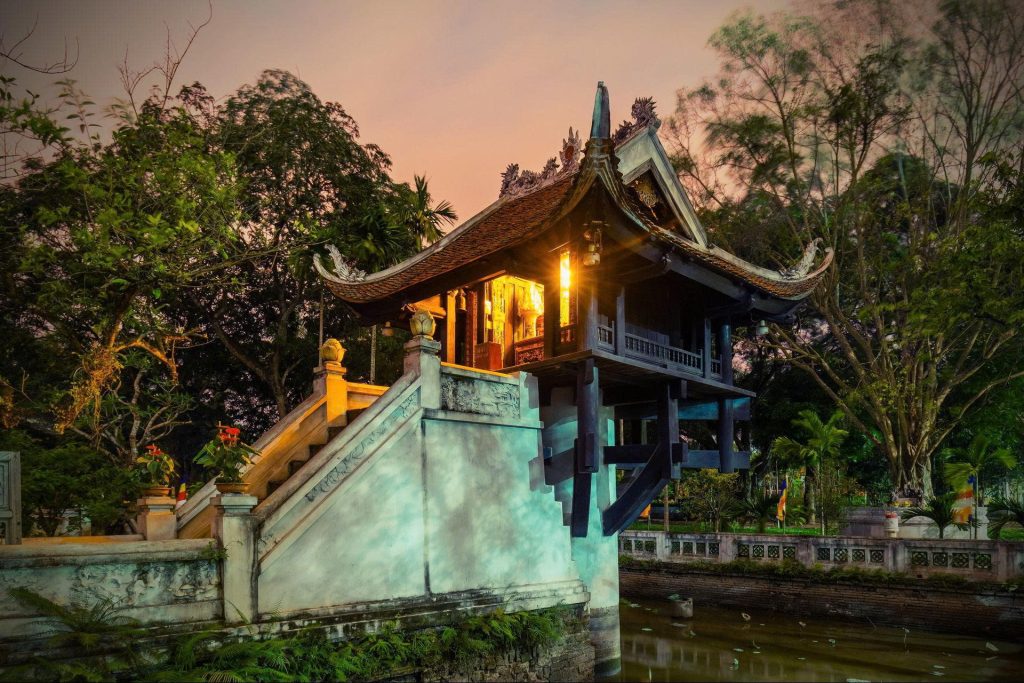
Built in the year 1049 during the time of King Ly Thai Tong, the One Pillar Pagoda presents a unique architectural style. Specifically, a small pagoda is supported by a lone stone pillar, symbolizing a lotus blossom ascending from the water.
Folklore suggests that King Ly Thai Tong’s dream featuring the Bodhisattva Avalokiteshvara on a lotus base motivated the pagoda’s construction. Consequently, the pagoda was built to show appreciation and to implore national prosperity. Beyond its artistic architectural merit, the One Pillar Pagoda is a significant repository of spiritual and cultural values.
The One Pillar Pagoda area encompasses the main pagoda and a small lotus pond that encompasses it, creating a tranquil and serene space in the heart of the capital city. Beyond its religious significance, the One Pillar Pagoda also hosts various cultural activities and festivals, attracting numerous tourists and Buddhists.
2. Tran Quoc Pagoda (Hanoi)
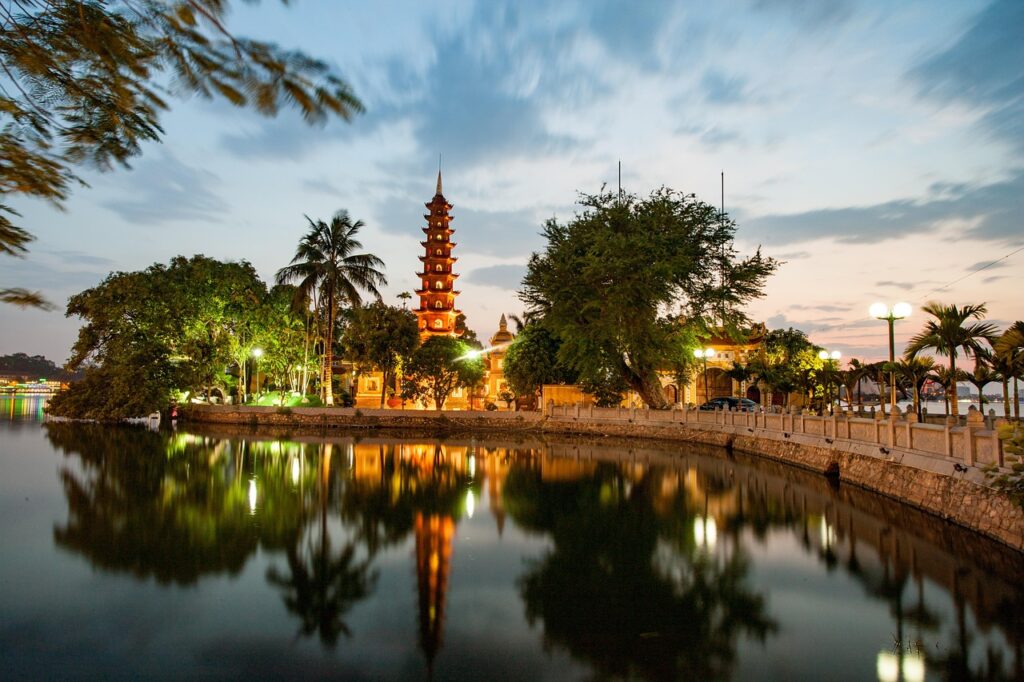
Considered one of the most beautiful pagodas in the world by the esteemed Thrillist, Tran Quoc Pagoda is located in Hanoi. This pagoda boasts a 1500-year history. As a result, it evokes numerous values related not only to spirituality but also to history and architecture.
Tran Quoc Pagoda stands as one of the most famous spiritual tourism destinations in Vietnam for visitors exploring the capital city.
Throughout history, Tran Quoc Pagoda functioned as the primary Buddhist hub during the Ly and Tran dynasties in Thang Long, the former name of Hanoi. Therefore, it was common for kings and mandarins to visit the pagoda and present their prayers during festive periods and the Tet holiday. The pagoda exhibits ancient, serene, and tranquil architecture.
3. Truc Lam Yen Tu Zen Monastery (Quang Ninh): The Land of Enlightenment
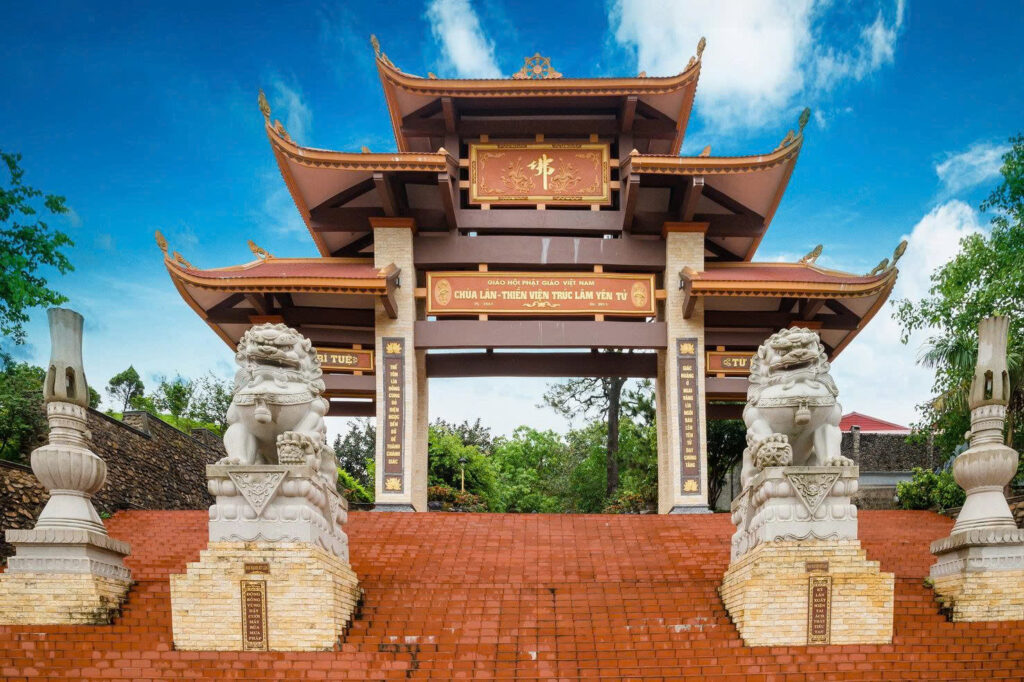
Nestled in the misty mountains of Quang Ninh province, Yen Tu is considered the birthplace of Vietnam’s Truc Lam Zen Buddhism. It’s where Emperor Tran Nhan Tong renounced his throne to lead a life of a monk, founding a unique Zen school. The mountain is a vast complex of pagodas, shrines, and a tranquil monastery.
- Attractions:
- Dong Pagoda (Copper Pagoda): Sitting atop the highest peak, this magnificent structure offers a stunning panoramic view.
- Giai Oan Stream (Vindication Stream): A historical site with a moving story of faithful court ladies.
- Truc Lam Yen Tu Zen Monastery: A peaceful place for meditation and learning about Zen philosophy.
4. Perfume Pagoda (Chua Huong): A Sacred Pilgrimage
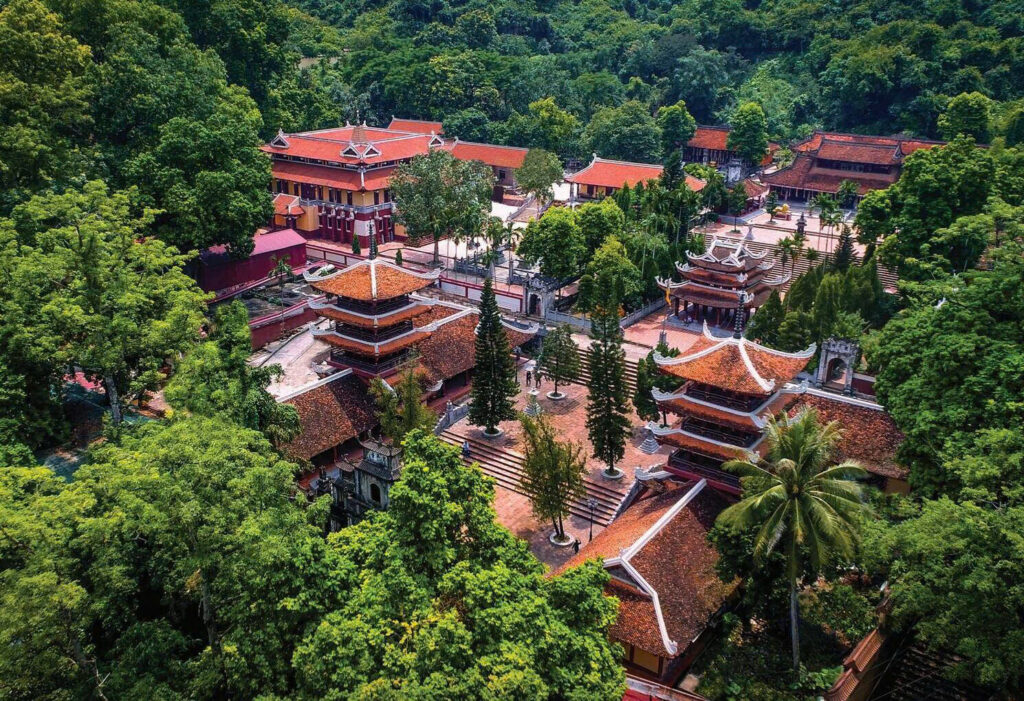
Located in My Duc district, Hanoi, Huong Pagoda, or Huong Son Pagoda is a vast Vietnamese religious and cultural complex. It encompasses numerous Buddhist temples, shrines dedicated to deities, and communal houses honoring agricultural beliefs.
The Huong Pagoda complex features remarkable architectural structures, divided into four main areas. Notably, the Huong Tich area highlights significant sites such as Huong Tich Cave, often called the “Prime Cave of the Southern Sky,” and Thien Tru Pagoda, the center for major festival activities.
- Tip: Visit during the pilgrimage season (Lunar New Year) for a vibrant cultural experience, but expect large crowds.
5. Bai Dinh Pagoda: A Modern Buddhist Marvel
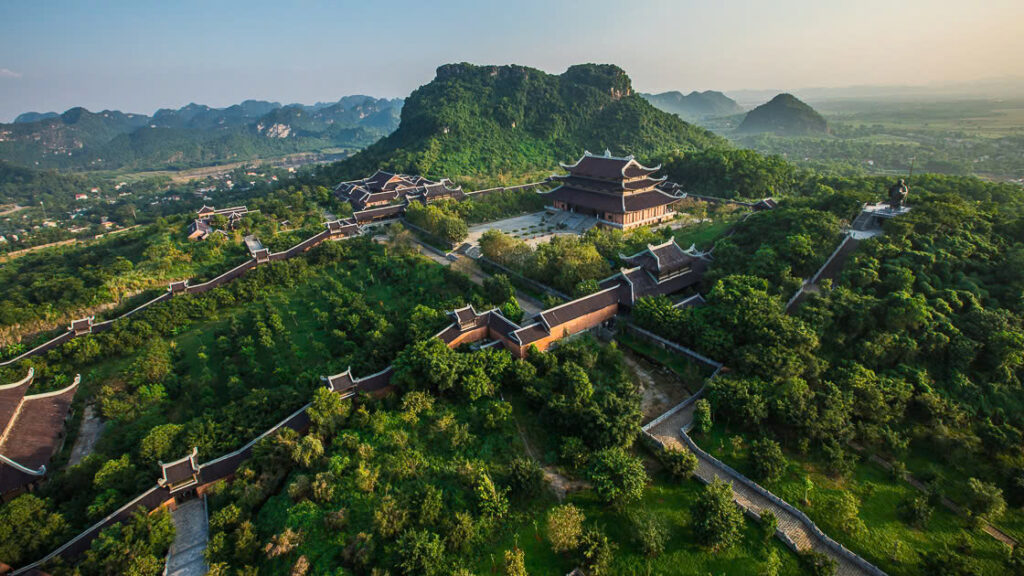
Bai Dinh Pagoda, located in Ninh Binh province, is a large pagoda complex and one of the most significant spiritual tourism destinations in Vietnam. Founded over a thousand years ago and associated with the Dinh and Ly dynasties, the pagoda has been through numerous restorations and expansions. As a result, it illustrates the progression and alterations of Buddhism as it has existed in Vietnamese society.
Nestled amidst majestic natural scenery, the pagoda welcomes millions of visitors and pilgrims annually. This has significantly contributed to the promotion of tourism and the economy in Ninh Binh, while also preserving the nation’s cultural and spiritual values.
Central Vietnam: Imperial Majesty and Timeless Beauty
The spiritual sites in Central Vietnam often intertwine with the country’s imperial past, offering a sense of royal elegance and peacefulness.
6. Thien Mu Pagoda: The Symbol of Hue
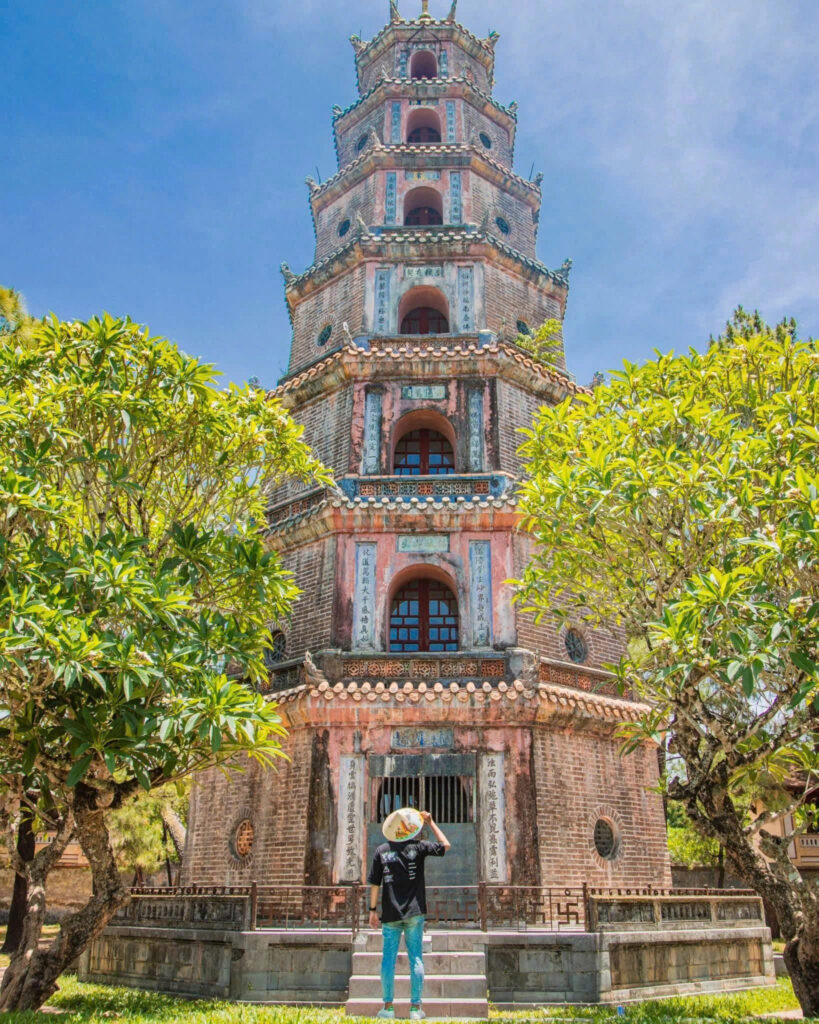
Thien Mu Pagoda is an exceptionally famous pagoda in Hue. Indeed, it is considered the most beautiful and ancient pagoda of the former Hue imperial city and today’s Hue. The mention of Hue naturally evokes images of the Perfume River, Ngu Binh Mountain, and the prominent Thien Mu Pagoda. Thien Mu Pagoda is associated with a notable local legend.
It recounts the appearance of a divine being on Ha Khe hill. This fairy announced to the community that a virtuous leader would come to the hill to construct a pagoda for Buddhist practice, thus solidifying the land’s spiritual energy. Hence, the pagoda was named Thien Mu (Heavenly Lady). It has developed into a key symbol and a beautiful characteristic of Hue.
- Tip: A dragon boat trip along the Perfume River is the best way to approach the pagoda, offering a scenic and spiritual journey.
RELATED: Top Famous Zen Monasteries in Vietnam You Must Try
7. Linh Ung Pagoda (Da Nang)
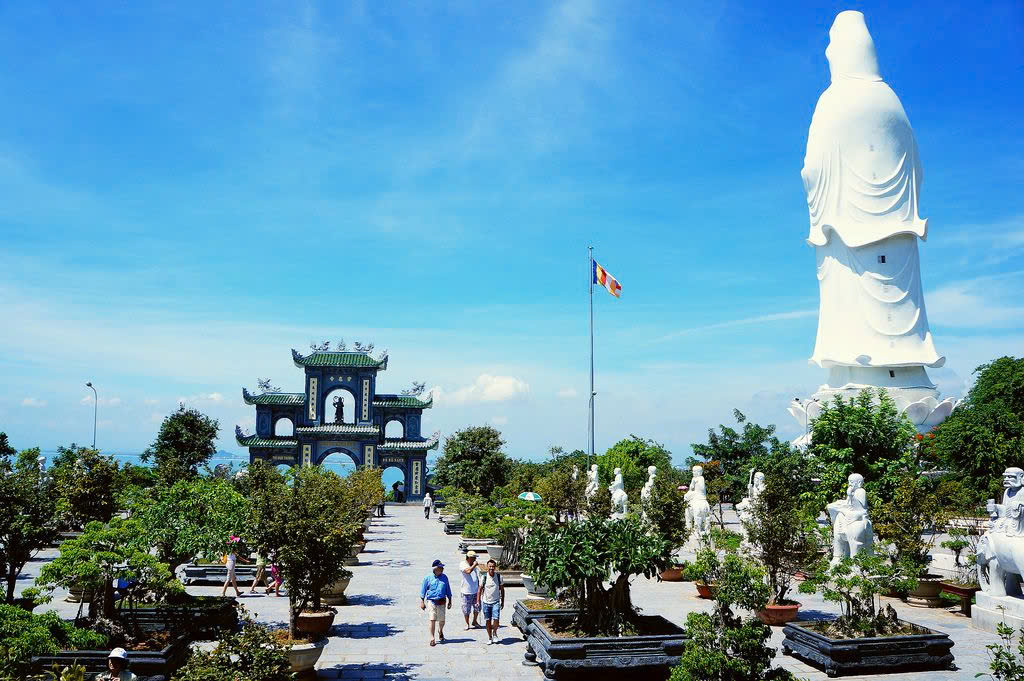
Linh Ung Pagoda, or Linh Ung Tu, is located in Da Nang city. This is one of three significant pagodas in the city that share this designation. Linh Ung Bai But Pagoda, situated on the Son Tra peninsula, stands out with its 67-meter-tall statue of the Bodhisattva Avalokiteshvara. The pagoda one of the largest Buddha statues in Vietnam and Da Nang’s most famous spiritual destination.
Apart from the Linh Ung Bai But Pagoda, Da Nang also possesses two other pagodas known as Linh Ung: specifically, Linh Ung Ngu Hanh Son Pagoda and Linh Ung Non Nuoc Pagoda. Linh Ung Ngu Hanh Son Pagoda is located in the Marble Mountains area, notable for its architecture and tranquil ambiance. Within the Marble Mountains, Linh Ung Non Nuoc Pagoda serves to further enrich the city’s spiritual tourism options.
Southern Vietnam: Diversity and Devotion
Southern Vietnam’s spiritual landscape is a rich tapestry of different faiths and historical events.
8. Vinh Nghiem Pagoda (Ho Chi Minh City)
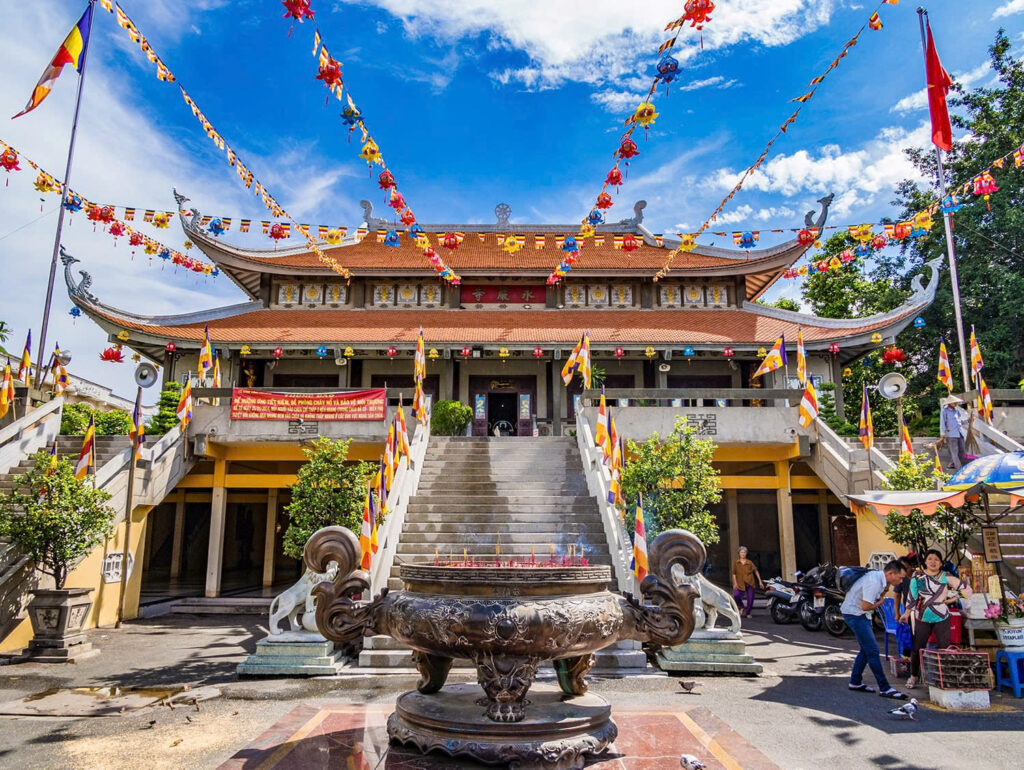
Located in District 3, Ho Chi Minh City, Vinh Nghiem Pagoda ranks among the largest and most well-known pagodas in the southern region of Vietnam. Constructed in 1964, Vinh Nghiem Pagoda was designed in the traditional architectural style of Northern Buddhism, harmoniously blending architectural art and nature. A prominent feature of the complex is the 7-story Main Hall tower, which enshrines Buddha statues and Bodhisattvas. The pagoda also showcases intricate sculptures, such as the Amitabha Buddha statue and murals depicting stories from Buddhist scriptures.
9. Ba Den Mountain (Tay Ninh)
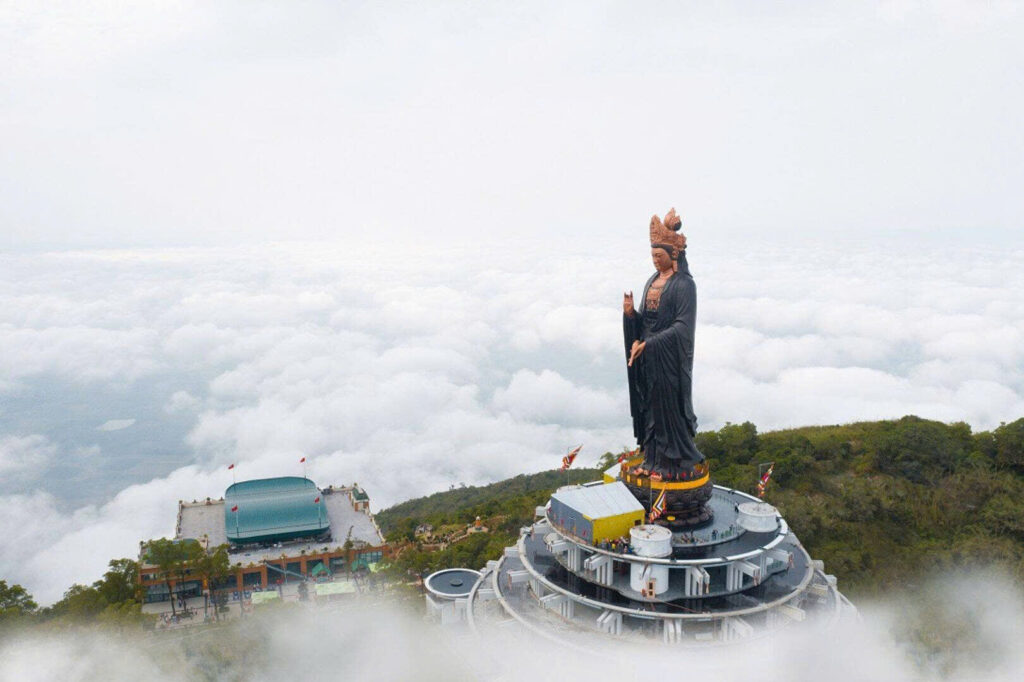
In Tay Ninh province, Ba Den Mountain is home to Ba Den Pagoda, a well-known spiritual tourism site in the southern part of the country. Furthermore, people often call the mountain the “roof of the Southeast” due to its 986-meter altitude. Consequently, the pagoda nestles amidst majestic natural scenery, offering visitors a sense of serenity and grandeur. Moreover, the pagoda dedicates itself to Linh Son Thanh Mau, a sacred deity in folk beliefs whom locals revere and to whom they pray for peace and good fortune. Annually, the Via Ba festival occurs on the full moon of the first lunar month, and this event attracts thousands of pilgrims.
Ba Den Pagoda showcases a mix of both classic and modern architectural designs. Notably, its grounds are generous, and it houses numerous Buddha images. Additionally, an up-to-date cable car provides simple access to the mountain’s peak. Consequently, the pagoda offers visitors impressive panoramic views of the Tay Ninh lowlands stretching to the horizon. Finally, with its spiritual atmosphere and scenic beauty, Ba Den Pagoda serves as both a religious site and a wonderful place where people can experience serenity amidst expansive nature.
10. Truc Lam Da Lat Zen Monastery
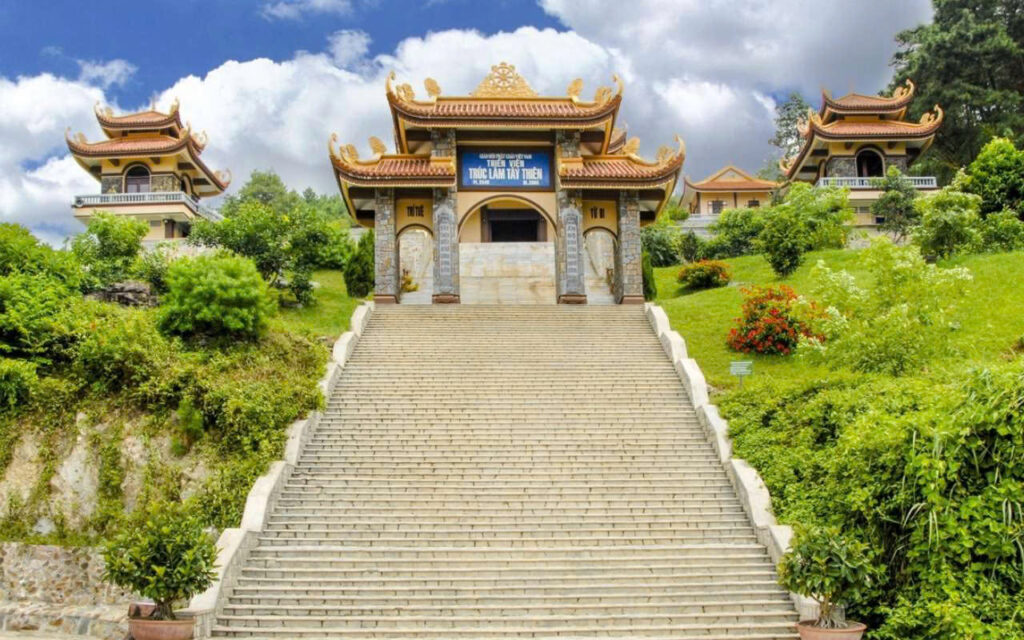
Truc Lam Da Lat Zen Monastery represents a distinctive architectural creation situated beside Tuyen Lam Lake. It occupies a location on Phung Hoang Mountain, embraced by Tuyen Lam Lake and the surrounding overlapping mountain ranges. This setting imparts a profound sense of peace and tranquility. It serves as a significant religious and spiritual site, drawing considerable attention from both domestic and international tourists.
Furthermore, it holds the distinction of being the largest of its kind in Lam Dong Province. Constructed in 1993, its design was the work of several renowned architects, including Ngo Van Thu, the architect behind the celebrated Independence Palace in Ho Chi Minh City. Moreover, it functions as the largest Zen research monastery in Vietnam.
Tips for Your Spiritual Journey
- Dress Code: Wear respectful clothing that covers your shoulders and knees.
- Respect Local Customs: Remove your shoes before entering pagodas and avoid touching sacred statues.
- Best Time to Visit: The spring season, particularly during the Lunar New Year, is a popular time for festivals and pilgrimages. However, visiting outside of peak times offers a more serene experience.
RELATED: Top Famous Zen Monasteries in Vietnam You Must Visit
Exploring Vietnam’s spiritual destinations is more than just sightseeing; it’s a journey into the heart of the country’s culture and history. From the Zen retreats of the north to the diverse faiths of the south, each site offers a unique opportunity for reflection, peace, and discovery. These sacred places truly embody the spirit of Vietnam, inviting travelers to connect with its timeless traditions.

